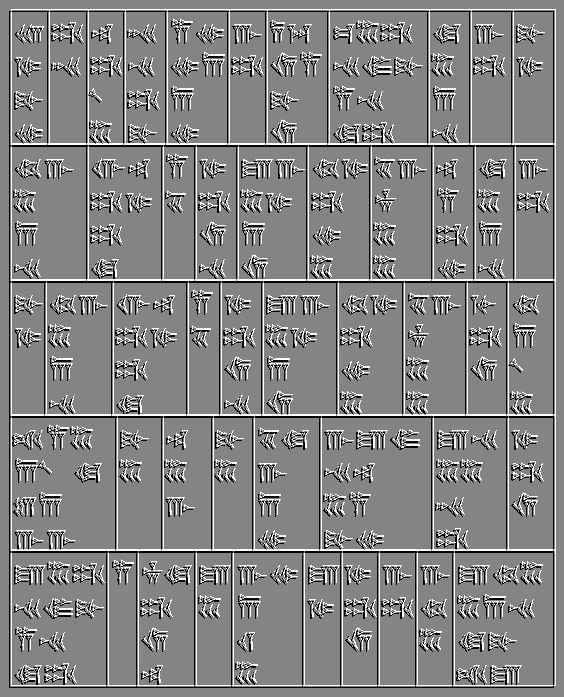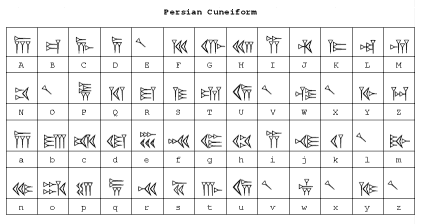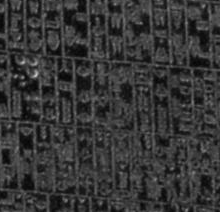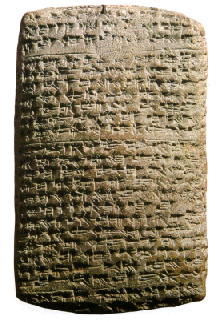 |
||||||
|
||||||
 The walls of the rooms in the great ziggurat are covered with stone plaques carved with cuneiform, the earliest form of writing on Earth. The two stelae (carved-stone obelisks) in front of the ziggurat are also covered in cuneiform. Someone familiar with cuneiform (which, fortunately, SG-13's archaeologist is) would soon realize that the bases of the stelae, which are different from the stelae, have a much earlier form of cuneiform than the stelae themselves. The same is true for the plaques lining the walls. Most of them are in the later form of cuneiform, but toward the back of the room are some plaques showing the much earlier form. Again, anyone familiar with cuneiform would know that it is used as the writing system for many different spoken languages (much as the 'Roman' alphabet is used to write English, German, French, etc.). In this case, the earlier form is used to write ancient Sumerian, the language of the gods Inanna and Dumuzi. The later form is used to write Akkadian (Babylonian is a later form of Akkadian)--the language of the god (or Goa'uld System Lord) Ba'al. For gaming purposes, since none of the people playing the characters really reads ancient Sumerian or Babylonian, a cuneiform font is used to create the plaques. This font is Old Persian, a much later and more regularized form of cuneiform than those that would be used for either Sumerian or Babylonian. But it's what was available and easy to use. For our archaeologist to 'translate' the plaques, the font is used as a simple substitution code--the plaque is actually written in English, with each word within one of the rectangles, and then the font is changed to Old Persian. All our SG-13 archaeologist has to do is decode the writing. Another way the archaeologist has it easier is that text from a font is much easier to read than text carved into stone (or pressed into clay tablets--see pictures below).
This method of separating the words, each word in a rectangle, is similar to that used on Manishtushu's obelisk (Manishtushu was a king of Sumeria and Akkadia, one of the sons of Sargon, who reigned from 2269 to 2255 BCE.). This obelisk is actually from a later period than Inanna's ziggurat on Uruk would have been built, but again, for gaming purposes, things have been simplified.
Although the archaeologist has found many plaques to translate, only a few of them are useful to the party in that they give information about the planet. Many are (translations of) real Sumerian poems to Inanna and Dumuzi. Can't make it too easy for the party, after all! In Stargate SG-1, for the sake of a show that is 44 minutes and 11 seconds long (how long an hour TV show really is after all the commercial breaks), every human speaks English (usually colloquial 21st-century English at that), no matter what planet they're from. But for gaming purposes, SG-13's archaeologist/linguist is the only person in the party who understands the local language--and at that, it's iffy. Even if he knew how Ancient Sumerian should sound, Sumerian that has had several millennia to change independently would be much less intelligible to him than, say, Chaucerian English is to the average American. However, again for game purposes, the GM is allowing him to understand most of what's said by the locals. Can you tell the GM has a degree in anthropology/archaeology?
|
||||||
Map of the area around the Stargate | Map of the area from the Stargate to the mine | Language and writing on Uruk |


